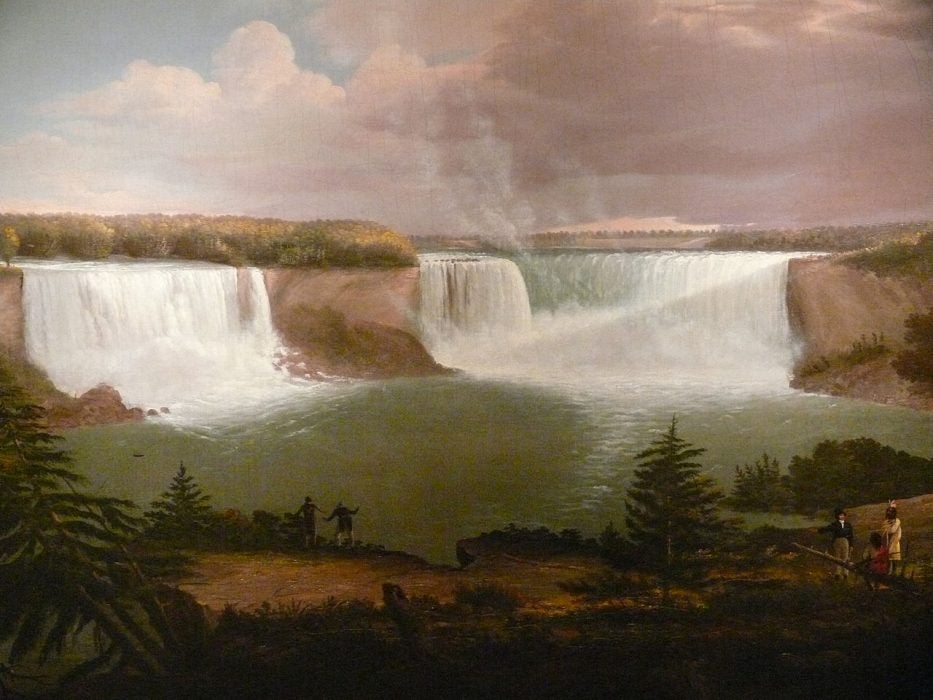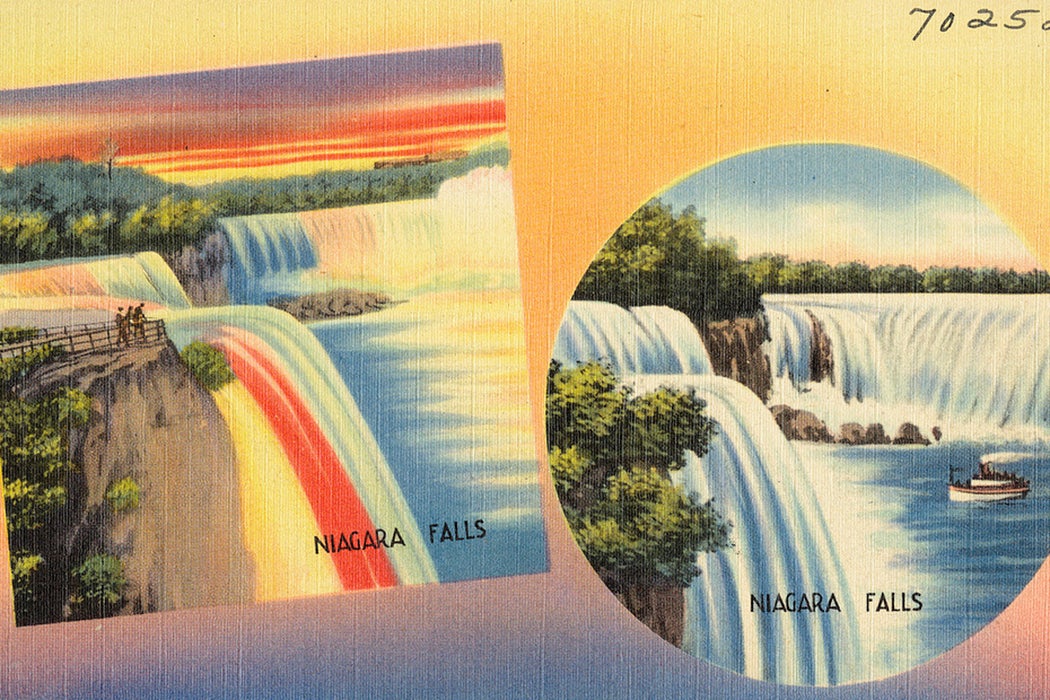Throughout history, American tourists have loved snatching up branded souvenirs to prove they’ve seen a vacation spot. But those souvenirs aren’t always benign. Historian Beverly Gordon explains how Niagara Falls became a hotspot of souvenirs that were associated with deeply-held, romanticized stereotypes of Native Americans.
Niagara Falls was one of America’s favorite vacation destinations during the nineteenth century. It was, for one thing, a great place to buy stuff. “People came to see and be part of the manmade spectacle as much as to see the natural wonder,” Gordon writes. Though much of Niagara Falls’s ninteenth-century appeal was constructed by people, the whites who visited tended to see the Native Americans who lived there as part of the natural world.
Earlier in the ninteenth century, notes Gordon, both Niagara Falls and Native Americans were perceived as threatening. Then, Americans domesticated the landscape around the falls and turned it into a tourist destination. At the same time, the United States “domesticated” Native Americans through its genocidal policies of forced removal and assimilation. Tourists of the day made a connection between the two, and a romanticized image of a “natural” Native American untainted by Anglo contact became part and parcel of the Niagara tourist experience.

And this Niagara tourist experience involved lots of souvenirs. Visitors rushed to buy items now called “whimsies”—novelties like pincushions and picture frames that often featured Native American subjects. It became the rage to bring back a gift that featured, for example, a painting of a beautiful Indian maiden overlooking the falls, or some other romantic depiction of a free, yet unthreatening, Native person. Meanwhile, Tuscarora people and people of other Iroquois tribes used Niagara Falls as a place to sell their handwork, hawking beadwork and souvenirs to white tourists who prized them for their authenticity.
Gordon sees these objects as a way for tourists to take home a symbolic “piece” not just of Niagara Falls, but of the supposed freedom and naiveté of Native Americans. At so-called “Indian stores,” wares created by local tribes were marketed as curiosities, and it became common, even imperative, to purchase something created by or depicting a Native person at the falls.
The high demand for such “whimsies” led to impersonators who pretended they were Native American in order to sell goods. Some Tuscarora children also dressed up as more stereotypical Native Americans, donning Sioux gear that was recognizable to tourists as “Indian,” to drum up sales.
Native American handwork is still sold at Niagara Falls, but “whimsies” are no longer to be found. And visiting new places continues to offer Americans chances to confront their own inaccurate stereotypes.







